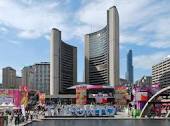Many parents we’ve spoken with over the past 18 months have said that their children’s school is in “pretty good shape” except for maybe needing a new coat of paint. Fix Our Schools wants to emphasize that much of the disrepair reflected in the $15-billion repair backlog in Ontario’s schools is invisible. Parents, teachers and students would have no way of knowing about much of the disrepair until there was a system failure. For instance, until classes are cancelled at a school because there is no heat, people would presume the boiler was in good shape.
The takeaway here is that just because the disrepair is invisible doesn’t mean that it won’t impact students and teachers at some point and definitely doesn’t mean that it can be deferred indefinitely! So, how is all of this disrepair calculated if much of it is invisible? Great question! Read on…
Over the past five years, Ontario’s Ministry of Education has engaged a company called VFA, a leading provider of facility assessment services, to assess the condition of Ontario’s approximately 4,900 public schools via a “Facility Condition Assessment’ (FCA).
An FCA involves a team of one or more specialists inspecting each system (mechanical, electrical, plumbing and architectural/structural elements) in a school building to understand its condition. The FCA team takes into account the remaining useful life of the system and also conducts a physical assessment of the school building. Unfortunately, this physical assessment is usually limited to a visual inspection and rarely involves any destructive or intrusive testing to make a better determination of the state of the building component. Therefore, an FCA team could visually inspect a school’s roof and deem it to be in good condition, and then the following week a major rain storm could prove that assessment incorrect when the roof starts to leak.
The FCA Team determines an estimated cost for each item of work that should be done on the school building’s system components (mechanical, electrical, plumbing and architectural/structural elements) and assigns each item of work a priority level: urgent, high, medium or low.
So, disrepair in public schools is based on these Facilities Condition Assessments conducted by VFA, a third party company engaged by the provincial government. Given the limitations of these assessments, the estimated $15-billion of disrepair in all 72 of Ontario’s publicly funded school boards may actually be quite conservative. Yet another reason why Kathleen Wynne’s provincial government must start to prioritize school buildings as important public infrastructure that must be repaired and rebuilt!

